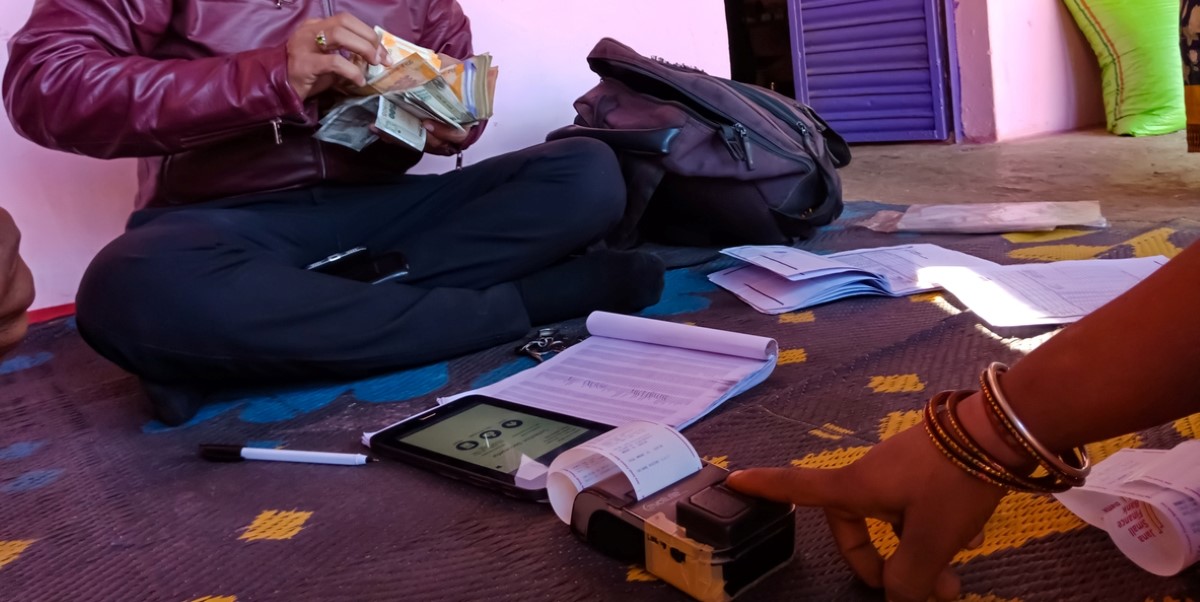Impact study which has been turned into a book, "Microfinance in Karnataka Sector Report 2023," by N Srinivasan was unveiled in Bengaluru.
Published Sep 13, 2023 | 2:13 PM ⚊ Updated Sep 13, 2023 | 2:13 PM

Customers prefer Microfinance institutions in Karnataka. (iStock)
An impact study on the status of microfinance in Karnataka has revealed that 89 percent of customers prefer microfinance institutions (MFIs) over other lenders.
According to the study, which covered 16,000 customers across seven districts in Karnataka, 90 percent of the loans were applied for income generation.
More than 60 percent of customers reported a positive impact on livelihoods and business, and over 65 percent of customers reported a positive impact on family well-being.
The impact study has been turned into a book, “Microfinance in Karnataka Sector Report 2023,” by N Srinivasan, former chief general manager, NABARD.
It was unveiled in Bengaluru on Tuesday, 12 September, at The Microfinance Karnataka Summit 2023 event, organised by the Association of Karnataka Microfinance Institutions (AKMI) to highlight the growth of the microfinance industry in Karnataka.
The impact study revealed that women had gained autonomy in running income-generation activities and that they also gained better space in family decision-making.
During the study, it also emerged that high-interest-rates-charged-livelihood activities don’t produce high returns; product structures were unsuitable as not all livelihoods have monthly income flows. Sometimes, competition erodes “good practices”, and innovations are limited to technology adoption.
According to the Sector Report 2023, microfinance institutions have been playing a very crucial role in providing various financial services to poor and low-income households in urban and rural India.
Reaching out to approximately more than seven crore borrowers with a loan portfolio of 3.48 lakh crore outstanding across India, the microfinance industry’s contribution to the economy has been very significant, it said.
In Karnataka alone, they have been reaching out through more than one crore loan accounts with a portfolio of ₹46,000 crore outstanding as on March 2023, the report said.
Reflecting on the microfinance sector, Srinivasan said: “MFIs have the power of good for vulnerable, low-income people. Customers come back in multiple cycles on account of the utility and functionality of MF credit.”
He further added, “Many customers have improved their livelihoods and quality of life, through sustained access to microfinance. Also, customers become financially competent as well as disciplined, both through training and practice.”
Speaking about the path ahead, Srinivasan said, “As we move forward, we need to innovate, diversify products and reduce interest rates to the extent feasible. Government and regulator support would be vital for lower cost of funds and subsidization of microfinance loans.”
“We should also provide loans at the same rate that banks offer and allow MFIs to diversify loans to micro-enterprises by lowering the threshold of qualifying assets to 50 percent,” he added.
The report also highlighted how the microfinance sector has played a key role in the state in providing credit support to vulnerable sections of the population.
India’s microfinance sector has recorded an overall portfolio growth of 21 percent during 2022-23, as per data. As per market data, the number of loan accounts for the microfinance industry increased to 136.3 million in FY23, from 123.9 million in FY22, posting a year-on-year (Y-o-Y) growth of 10 percent.
Speaking on the occasion of the Microfinance Karnataka Summit – 2023, Udaya Kumar Hebbar, Chairperson, MFIN and MD, CreditAccess Grameen Ltd said, “The basic foundation of micro-credit was established in Karnataka, which over the years set an unparalleled benchmark in the field of financial inclusion.
He further said, “The doorstep delivery model has nurtured women’s entrepreneurship spirit and is one of the prominent sources of capital at the bottom of the pyramid.”
“The elements of financial training, insurance facilities, and community development initiatives are a true reflection of the microfinance model providing overall growth opportunities with customer protection at the core,” he added.
(Disclaimer: The headline, subheads, and intro of this report along with the photos may have been reworked by South First. The rest of the content is from a syndicated feed, and has been edited for style.)
